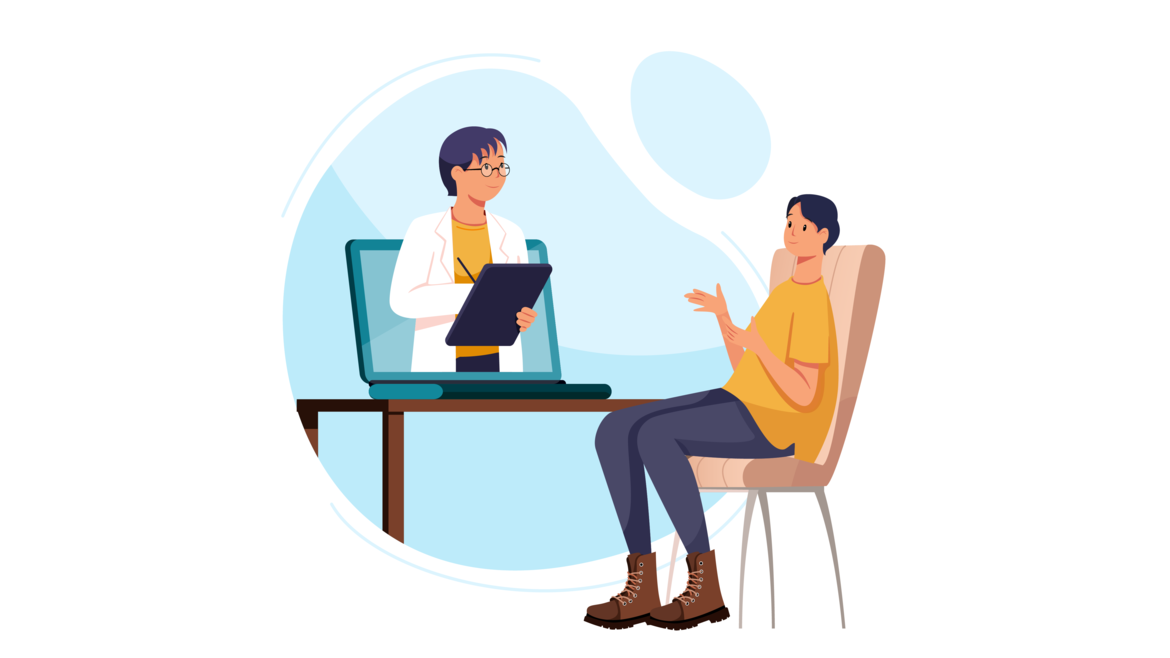BY KYLE ELLIOTT
Kyle Elliott started his career reviewing job seekers’ resumes and LinkedIn profiles on Fiverr for $5. A few years later, he was providing in-depth advice on job candidates to companies like LinkedIn, Facebook, and Google. Finally, in 2017, he quit his full-time job to run his own career coaching company, CaffeinatedKyle.com. He is also pursuing a doctorate in higher education and studying storytelling to reduce stigma related to mental health challenges.
He lives with generalized anxiety disorder (GAD) and obsessive-compulsive disorder (OCD). He also manages post-traumatic stress disorder (PTSD) as a result of a sexual assault. He is 27 years old and lives with his partner outside of San Francisco in Benicia, California.
The word I chose for 2020 is “fun.” While fun may seem more difficult to achieve right now, I’ve been working diligently to have more fun this year. I gifted myself an Annual Pass to Disneyland, and before the crisis, my partner and I were driving down to Disneyland from SF at least once a month.
I decided to focus on fun this year because so much of my life—nearly all of my life—has been focused on work, work, work. This crisis has been like the world telling us all to slow down or go to our rooms for a time-out. I’m learning to lean into the discomfort of this forced rest and relaxation and have been focusing on having fun.
Writing and sharing
I live with generalized anxiety disorder and OCD. But it took a long time to figure that out. I had migraines for years … and years and years. I went to so many doctors and we tried lots of medications, and no one could figure out why I had all these migraines. Finally, a doctor recommended I see a psychiatrist and within a handful of minutes, she said that I’m likely dealing with anxiety and OCD. As soon as we started treating these conditions, my migraines started dissipating.
I just wonder what would have happened if five years earlier someone would have said, “Oh, you’re not feeling well? Let’s talk about your mental health.” This is what happens when we don’t look at the whole picture. That’s why I’m excited about my dissertation research on storytelling around mental health. What would happen with people like me if we just had more conversations about mental health?
This is one of the reasons I joined the Stability Network. Because we need to talk more about living with mental health conditions. Mostly because people know so little about them and are afraid of being diagnosed or knowing the diagnoses of others.
I want people to understand that everyone experiences mental health challenges differently. It’s not just what you see in the media or movies. Oftentimes, people interact with me and they don’t know that I live with severe and persistent mental health challenges. When I talk about it, they say, “Oh my gosh, wow. I had no idea.”

Writing and speaking about my lived experiences has been key—during this crisis and before. I am open about living with mental health challenges because I believe it makes a difference and I wish more people would have been open when I was struggling. A few weeks ago, I had a panic attack because of the stress of COVID-19 and I shared about it on LinkedIn. I shared that I have a lot going on and I’m stressed. I wanted people I know other people are going through it too. I wanted people to realize that they’re not alone.
I know a lot of people don’t share things like this on LinkedIn because it’s a “professional” network. But my clients were struggling with the stress of the job search during this crisis, and I feel like it’s important to break down stigma and lead by example. LinkedIn has been one place I’ve focused on because we’re not talking about mental health challenges on that platform and professionals need to hear these things too.
Recovery is possible
I also wish more people understood that recovery from mental health challenges is possible. Not enough people focus on that. The work of recovery is different for everyone. For me, talk therapy has been the biggest strategy. As soon as I started going to therapy and addressing the underlying issues, I started feeling better.
Meditation has been a big part, in tandem with therapy. I cannot sit and meditate for 30 minutes but doing even two minutes of meditation can be helpful. I use Calm’s “Do nothing for two minutes” website. If you touch your mouse or keyboard, it starts over.
I also do bilateral music—listening to music that goes from ear to ear. It’s a lot like Eye Movement Desensitization and Reprocessing (EMDR) which is a break-through treatment for PTSD that uses back and forth stimulation of both sides of the brain—through left- and right-hand tapping or following lateral movements with the eyes—to enable people’s brains to integrate traumatic experiences. To me, bilateral music feels like meditation, but you’re not just sitting there. It engages your mind, is interesting to listen to, and it’s fun.
While it takes some effort, mental health conditions don’t have to be life-ending. Stability Leaders are a great example of this fact. We all manage our mental health and can have successful careers, families, and fun!

Figure out a routine that works for you
I’m a big routine person; creating routines and systems helps me stay mindful. During this crisis, a lot of my routine had to change. It’s become clear that most of the things I enjoy are “non-essential.” I used to work from a coffee shop Monday, Wednesday, and Friday. The people who work there were like my colleagues and I miss that socializing. My partner and I love to go to restaurants—usually Tuesdays and Fridays. Now, instead of sitting in restaurants, we get takeout and eat at home. Sometimes we even go out for ice cream.
I don’t like sweating, so I don’t go to the gym or run. I walk which has been helpful. I call my parents every day and call my nanas every week. I like Starbucks, so I make getting out for coffee part of my routine when working from home.
I’ve also been adding virtual socializing to my life. I’m not a big webinar person; I don’t often enjoy them. But I’ve been hopping on webinars and virtual events and finding that it’s a good way for me to meet with people. I’ve been doing FaceTime lunches with friends as a replacement for coffee shop interactions. Through these workarounds, I’m realizing that I can keep up a lot of my routines, I just have to do them differently.
Through this crisis, I’m noticing how resilient I am. I’ve put in a lot of work—years of therapy and self-care—and it is paying off. I can’t imagine how I’d be navigating right now had I not made that effort. I’m proud of myself, and my experience shows that treatment works, and recovery is possible—even during COVID-19.


4 responses to “Treatment Works—Even During a Crisis”
Thanks so very much for allowing me to share my story of recovery! This is how we cure stigma — one story at a time. ~ Kyle Elliott, MPA, CHES (CaffeinatedKyle.com)
Yes, exactly! We are honored to highlight your story and greatly admire your courage and passion to encourage others.
Thank you for sharing your story Kyle, it is very courageous. I admire you so much for taking care of yourself and your resilience. It was so nice meeting you on the TSN panel. Hope to talk to you soon!
Kyle,
I loved reading your story. I found myself leaning in and curious about what you were going to share next. You cast a shadow on difficult experiences, and then you shine your bright light in the name of no stigma. Thank you.